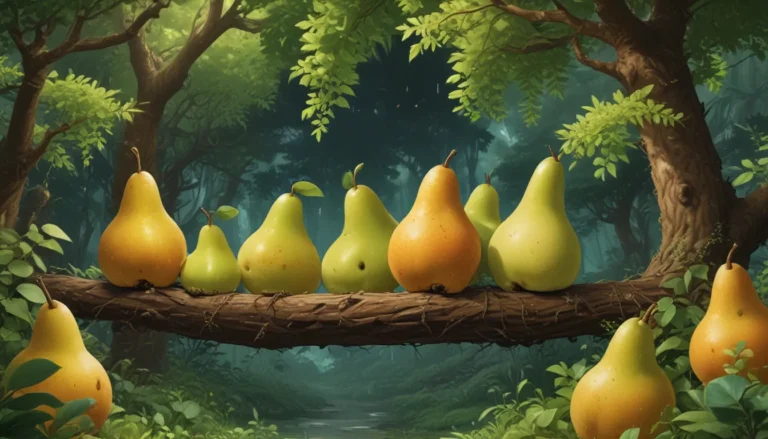Essential Guide to Growing and Caring for Purple Passion Plants

If you’re a plant lover looking to add a touch of velvet to your indoor jungle, look no further than the captivating purple passion plant. Also known as Gynura aurantiaca, this houseplant stands out with its furry purple leaves that shimmer with iridescence when struck by light.
But there’s more to the purple passion plant than just its striking appearance. From cultivation and history to propagation, growing tips, and more, this comprehensive guide will teach you everything you need to know to care for this unique plant.
Let’s dive into the world of purple passion plants:
What Is Purple Passion Plant?
The purple passion plant, Gynura aurantiaca, is an evergreen perennial native to Indonesia. Loved for its violet-tinted foliage, this plant features oval-shaped leaves with coarsely toothed margins. But what truly sets the purple passion plant apart is its velvety texture and mesmerizing purple glow, thanks to the small purple hairs covering the leaves.
In addition to its unique appearance, the purple passion plant produces yellowish-orange flowers with a distinct smell that some describe as similar to rancid butter or stinky socks. As such, many indoor gardeners opt to remove flower buds before they bloom to avoid the unpleasant odor.
Cultivation and History
As a member of the sunflower family, Asteraceae, the purple passion plant thrives in tropical, wet conditions as an understory plant. It is closely related to garden staples such as marigolds and lettuce, as well as popular houseplants like string of pearls and gerbera daisies.
This plant, also known as velvet, royal velvet, or purple velvet plant, is considered nontoxic to humans and pets and has been used for its antiviral properties in native regions.
While commonly grown indoors, the purple passion plant can also thrive outdoors in USDA Hardiness Zones 10 to 12.
Purple Passion Plant Propagation
Propagation of the purple passion plant is best done through stem cuttings, as seeds are not easily obtained. Taking cuttings is a straightforward process, and you can choose to propagate in soil or water.
From Cuttings in Soil
- Take stem cuttings with at least two nodes and remove the lower leaves.
- Apply rooting hormone for better success.
- Insert cuttings into moist soil.
- Place in indirect light and maintain moisture until roots develop.
From Cuttings in Water
- Take cuttings and place them in a jar of water.
- Root cuttings in indirect light with regular water changes.
- Transplant rooted cuttings into soil once roots are established.
How to Grow Purple Passion Plant
Purple passion plants are low-maintenance and thrive in bright to medium, indirect light. They prefer consistently moist but well-draining soil, making it essential to allow the surface to dry between waterings.
Maintaining a humidity level of 40 to 60 percent and a temperature range of 75 to 80°F will promote optimal growth for this plant. Avoid temperatures below 55°F to prevent injury to the plant.
Growing Tips
- Grow in bright or medium, indirect light.
- Choose a moisture-retentive, well-draining growing medium.
- Water when the soil surface is dry to the touch.
Pruning and Maintenance
Regular pruning and maintenance are essential for healthy purple passion plants. Remove faded leaves, prune leggy growth to encourage bushier growth, and feed with a balanced fertilizer to promote optimal growth.
When repotting, select a container one size larger than the current pot and ensure good drainage. Repot every two years or when roots become rootbound.
Velvet Plant Cultivars to Select
Choose from cultivars such as ‘Purple Passion’ or ‘Variegated Purple Passion’ to add variety to your collection. These cultivars offer different growth habits and unique foliage colors.
Managing Pests and Disease
To keep your purple passion plant healthy, watch for common pests such as aphids, mealybugs, and spider mites. Regularly inspect for signs of pests and disease, and maintain optimal growing conditions to prevent root rot and other issues.
Best Uses for Purple Passion Plant
The purple passion plant is versatile and can be grown in hanging baskets or as tabletop plants. It adds a unique touch to eclectic or gothic decor and pairs well with African violets, prayer plants, and spiderwort.
Quick Reference Growing Guide
- Plant Type: Evergreen perennial
- Flower/Foliage Color: Yellowish orange/purple, green
- Native to: Indonesia
- Maintenance: Low
- Hardiness (USDA Zone): 10-12
- Tolerance: Humidity, low light
- Bloom Time/Season: Winter
- Soil Type: Houseplant soil
- Exposure: Bright to medium, indirect light
- Soil pH: 6.1-7.3
- Time to Maturity: 3-5 years
- Soil Drainage: Well-draining
- Companion Planting: African violets, asparagus fern, begonias, ferns, prayer plants, spiderwort
- Height: 1-2 feet
- Uses: Hanging planters, interiorscapes, ornamental foliage, tabletops
- Family: Asteraceae
- Water Needs: Moderate
- Genus: Gynura
- Common Pests and Diseases: Aphids, mealybugs, scale, spider mites, whiteflies; Downy mildew, root rot
- Species: Aurantiaca
Voluptuously Velvety Vines
In conclusion, the purple passion plant is a captivating addition to any indoor garden. With its unique appearance, ease of propagation, and low-maintenance care requirements, this plant is sure to delight plant enthusiasts of all levels.
Do you have any growing tips or experiences with purple passion plants to share? Feel free to drop us a comment below – we’d love to hear from you and answer any questions you may have. And remember, if you’re looking to expand your plant collection, check out our other guides for more inspiration!





